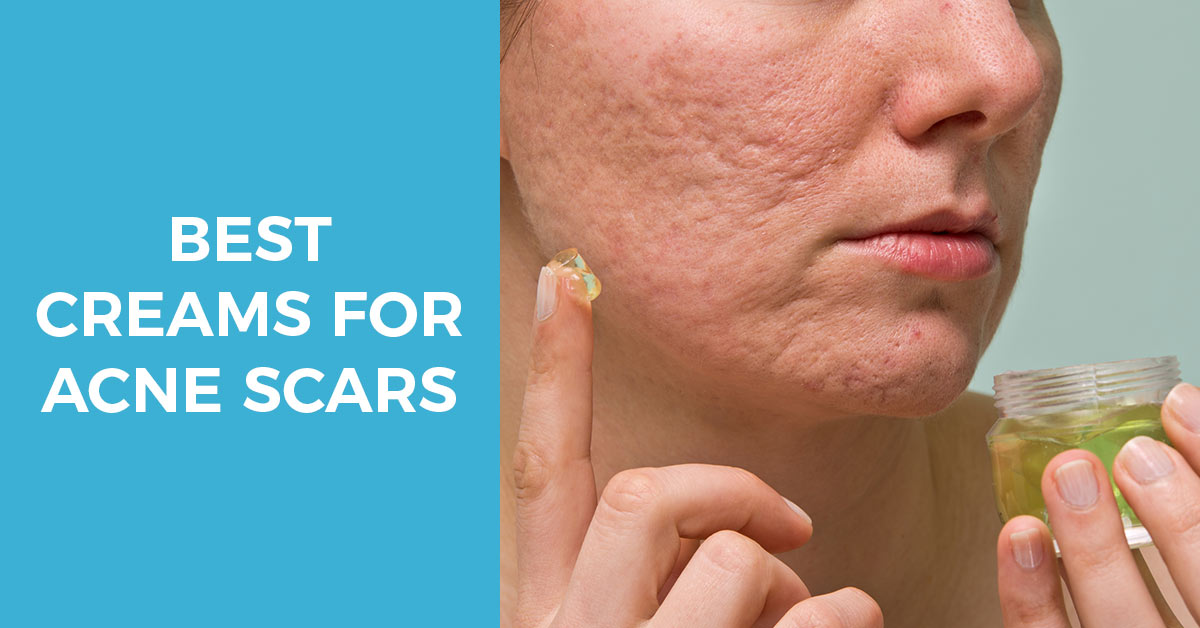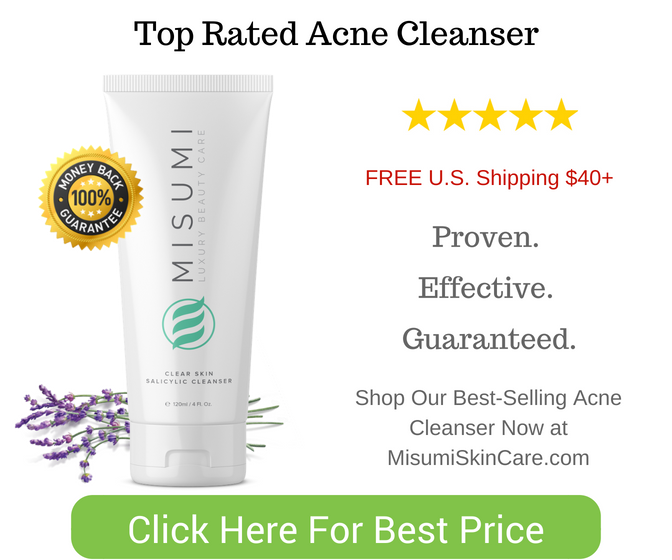Contents
This isn’t news you won’t have heard before, especially if you’ve been following my posts regularly – but I feel it’s worth repeating:
Acne scars suck.
Anyone, like me, who has suffered from the hyperpigmentation that occur after a blemish has disappeared will know what I’m talking about. And, it can affect everyone, regardless of their age, lifestyle, or skin color.
Manifesting itself as a brown or red mark, it can last weeks, or if you’re really unlucky (like me), for months on end. And as someone at the unlucky end of the spectrum (I’m not bitter, honestly) I can honestly say I’ve tried every means possible to get rid of these stubborn acne scars.
I understand that the way to get rid of these dark marks for good is to invest in some laser therapy or Retin-A, but this isn’t always within everyone’s reach.
Thankfully, though, there are some more accessible treatments that can help you get back to your much-loved, natural complexion – the one you vaguely remember before you had your breakouts. And, on the whole, these don’t cost a fortune – which, for anyone who’s invested lots of time and money into acne treatments, is a huge bonus.
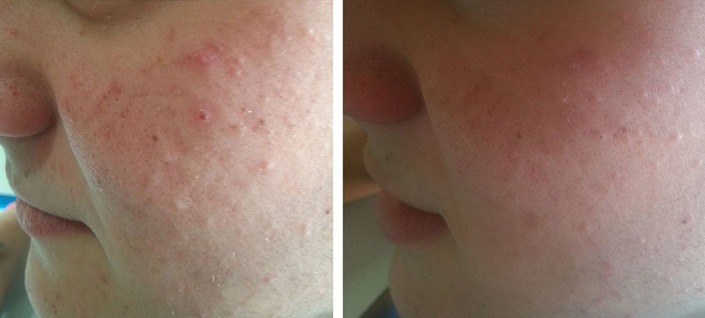
Using Creams to Treat Acne Scar
Some of these products don’t help in the battle of preventing breakouts but they do help in the never-ending issue of getting rid of dark marks. And that, my friends, is a welcome relief.
Below, I’ll explore what post-inflammatory hyperpigmentation is, how it affects your skin, and how it can be treated, before exploring some of the best creams for acne scars.
What is Post-Inflammatory Hyperpigmentation
Post-inflammatory hyperpigmentation (PIH for short) is the medical term that describes how your skin discolors after an inflammatory wound. Even though it doesn’t look natural, it is your skin’s built-in response to inflammation.
PIH tends to look like an area of discoloration on your skin, which is flat. These areas can also be referred to as macules. They can range in color, from brown to black, and pink and red to purple, depending on the depth of discoloration and your skin tone.
PIH develops when your skin is irritated or wounded – like when a pimple inflames your skin. Then, as the skin heals, it over-produces melanin, which is the protein in your skin that gives it its color. Due to this excess melanin being produced, your skin becomes discolored and darkens, with this remaining even after the pimple has healed up.
All skin types can develop PIH, however, it tends to last longer and be more severe in people who have medium or dark complexions. It affects women and men equally.
Unfortunately, acne is a primary cause of PIH and it’s very common to suffer from this after you’ve had a breakout. Hyperpigmentation can even arise as the result of a minor papule or pimple. However, the PIH spot will be darker and larger if your breakout is more inflamed. Equally, if you pop or pick your pimple, you’ll increase the risk of developing PIH because you’re adding to the inflammation your spot has caused.
We’ve included a great video below which explains a bit more about the journey you may be having with your acne and hyperpigmentation. Ingrid shares her own story and what has worked for her in her battle against acne and its side effects.
What’s the Difference Between Post-Inflammatory Hyperpigmentation and Acne Scars
Even though PIH is often sectioned underneath “acne scars,” it isn’t actually a type of scarring. Instead, it’s what’s called “pseudo scarring” as, 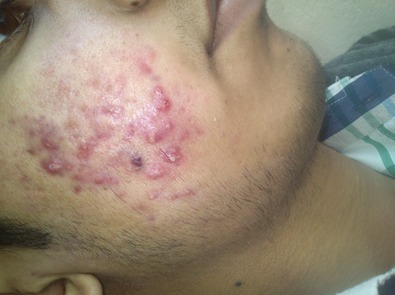 even though it does leave a dark mark on your skin for a while, it doesn’t do any damage to your follicle.
even though it does leave a dark mark on your skin for a while, it doesn’t do any damage to your follicle.
A true acne scar occurs when too much tissue is produced, creating a raised scar; or tissue is lost, creating a depressed or pitted area. Alternatively, PIH is flat and doesn’t cause your skin to become raised or pitted – it’s simply darker than the rest of your skin tone.
For more information on acne scars, the different types, and the more extensive treatments available for severer scars, check out our blog – How to Remove Acne Scars.
Will My Post-Inflammatory Hyperpigmentation Fade with Time
There is some good news (hallelujah!), your PIH can fade as time goes on, even if you don’t treat it. However, time is the important word because it can take anywhere from three to 24 months for your post-inflammatory hyperpigmentation to fade completely, but, in more severe cases, it can take even longer.
How long it takes for your PIH to fade will depend on how dark it is compared to the rest of your skin tone. The bigger the contrast between your natural skin color and the macule, the longer it’ll take to fade.
In rarer cases, PIH doesn’t fade on its own. Sometimes, it can be permanent.
There are treatments that can help lighten these scars considerably, if not erasing them altogether. Over time, the treatment can speed up how long it takes for your PIH to fade, if you’re keen to get rid of these spots as quickly as possible.
How to Choose the Best Creams for Acne Scars
In your battle against these acne scars, you may find over-the-counter products are sufficient enough, especially if your PIH is only subtle. 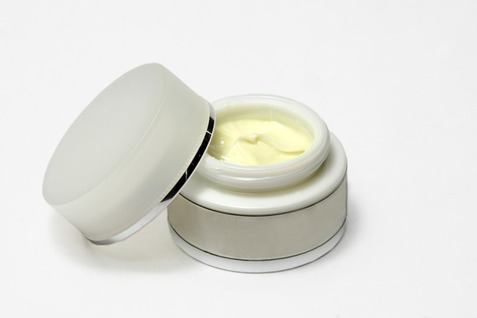 However, for darker marks or ones that you’ve had for a while that don’t seem to be fading, you may require a stronger prescription treatment. Your doctor or dermatologist should have a plethora of products that’ll do the trick if you can’t get rid of them with shop-bought solutions.
However, for darker marks or ones that you’ve had for a while that don’t seem to be fading, you may require a stronger prescription treatment. Your doctor or dermatologist should have a plethora of products that’ll do the trick if you can’t get rid of them with shop-bought solutions.
Another important thing to remember is – if you get rid of your acne successfully, you’ll also stop your skin developing HIP. This in itself is an important step in treating your hyperpigmentation and is another step your doctor or dermatologist may be able to help with.
But whatever treatment you choose, remember, it will take time for your skin to improve.
Alpha Hydroxy Acids (AHAs)
A common type of AHA is glycolic acid, and alpha hydroxy acids are a great starting point when trying to treat acne scars. They help speed up the natural exfoliation process of your skin, which can improve how your PIH looks.
You’ll often find these ingredients in the “skin brightening” treatments you get over the counter. Leave-on treatments like gels, creams, and lotions are often more successful than wash-off solutions (e.g. cleansers).
Other ingredients that are available in OTC treatments include vitamins A and C, niacinamide, glucosamine, and N-acetyl – all of which can prove helpful in treating your hyperpigmentation.
Furthermore, there are stronger AHAs available, but you will need a prescription for these. You’ll often find these types of treatments are used as anti-aging products too, so they help leave your skin feeling smooth and soft – win, win
Hydroquinone
This is a treatment that’s widely used in the battle to treat PIH. 1 to 2 percent strengths are available over the counter, but prescription creams up this dosage to 3 to 4 percent. Hydroquinone works to lighten the skin by blocking the enzyme that’s responsible for producing melanin.
You’ll also find that hydroquinone creams often contain other lightening ingredients, such as vitamin C, tretinoin, glycolic acid, and kojic acid. Having a combination of these ingredients can be more effective at treating your PIH than hydroquinone on its own.
When using hydroquinone creams, you should be careful to only apply them to the darker areas. This prevents the cream from lightening the other areas of your skin. You should also be aware that hydroquinone can irritate your skin, so you may want to discuss this with your doctor before proceeding.
Topical Retinoids
 These types of creams are often prescribed to treat the breakouts caused by acne. Retinoids help clear spots up by increasing your cell’s turnover rates. However, this rapid exfoliation process can also help fade your PIH.
These types of creams are often prescribed to treat the breakouts caused by acne. Retinoids help clear spots up by increasing your cell’s turnover rates. However, this rapid exfoliation process can also help fade your PIH.
There are a number of retinoid creams available, including Differin (adapalene), Tazorac (tazarotene), and Retin-A Micro and Retin-A (tretinoin). The huge bonus of these prescription creams is they treat your acne breakouts while they’re at it, too.
All of these medications are prescription only, except Differin. You may also need to wait several weeks to a few months for results to start appearing. Watch out for irritation, redness, and excessive dryness, as these side effects can create HIP
Azelaic Acid
Azelaic acid is another combination treatment that can treat post-inflammatory hyperpigmentation as well as acne. It works by speeding up the turnover rates of your cells while also decreasing inflammation. Azelaic acid may be used alongside tretinoin or glycolic acid.
Some studies have demonstrated that azelaic acid is as effective as hydroquinone in treating hyperpigmentation, reducing some of the side effects some people suffer from when using hydroquinone.
Available by prescription only, if you’re using azelaic acid you should monitor your skin for irritation and redness, contacting your doctor immediately if you are experiencing any of these side effects.
Recommended Over-the-Counter Acne Scar Creams
To get you started with your treatment program, here are three of the creams available that come highly recommended
#1 Mederma Advanced Scar Gel
This is a topical gel that’s been specially formulated to help reduce the appearance of new and old scars. Mederma Advanced Scar Gel has been clinically proven to improve a scar’s texture, color, and overall appearance, working on a variety of scars, including acne scars. For new scars, this treatment should be applied every day for 8 weeks, while older scars can be treated for three to six months.

#2 Amaira Advanced Scar Cream
Providing results in less than 8 weeks, this advanced formula removes new and old scars, including those caused by acne. Amaira Advanced Scar Cream is made from natural ingredients, including avocado seed extract and shea butter, helping to support your skin’s natural healing process while also fighting off infection and lightening the appearance of scars. It’s safe for all skin types, too.

#3 Mederma PM Intensive Overnight Scar Cream
Working while you sleep, the Mederma PM Intensive Overnight Scar Cream gets to work fast, making the most of the body’s healing process that works overtime while we sleep. With noticeable results in as little as two weeks, this cream helps your skin repair and regenerate, making your scars’ appearance less visible and smaller.

Getting the Most Out of Your Cream for Acne Scars
Before you start treating your acne scars with cream, there are some helpful tips that’ll help you get the most out of your treatment:
- You should be treating your acne or have it under control. If not, each new spot could cause another dark mark or scar, meaning you never get ahead of your treatment and don’t see the natural skin tone you’re searching for.There are a number of over-the-counter products available that can help treat mild acne. Or, you may need to seek the advice of your dermatologist or doctor for prescription medication that can help with severe or stubborn breakouts.
- You should wear sunscreen every day. As the sun can increase fading time and darken discolorations, you must use sunscreen every day. Furthermore, some PIH treatments (and acne treatments) can increase your skin’s sensitivity to the sun, making it even more imperative that you wear it. And if you are worried about sunscreens increasing your risk of breakouts, there are some specially-formulated products available that can help with acne-prone skin.
- Keep checking your skin for any signs of irritation. Even though these creams are helping to clear your skin up, PIH and acne treatments can also cause irritation. And unfortunately, if your skin is irritated, it can create an uneven skin tone and more dark spots. You should always let your dermatologist or doctor know if your skin’s irritated by the treatment they’ve offered you.
- Keep your skin well moisturized. As well as the cream you’re using to treat your acne scars, be sure to keep them well moisturized too. This helps the skin’s healing time and keeps your scars moist and supple.
Conclusion
When you’re ready to start treating your acne scars with cream, there are plenty of options available to you.
Be patient with the process because it can take a while for post-inflammatory hyperpigmentation to fade, regardless of the treatment you choose. Think of your goals in terms of months instead of weeks and you’ll find that your consistent, steady treatment starts to pay off.
Have you suffered from acne scars following a breakout? How did you fade these and what creams did you use? Please use our comments box below to share your acne-scar-busting stories with me and my readers!

